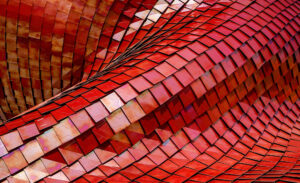Forget the Math! Draw pictures to learn the wave theory of light
At a Glance
Discipline
- STEM
- Physics
Instructional Level
- College & CEGEP
Course
- NYC Waves, Light, and Modern Physics
Tasks in Workflow
Social Plane(s)
- Group
- Whole Class
Type of Tasks
- Solving problems
- Reviewing & assessing peers
- Writing
Technical Details
Useful Technologies
- Whiteboards
Time
- Single class period (< 90 mins)
Instructional Purpose
- Application & knowledge building
Overview
In this activity, students, working in groups, are asked to answer a series of problems on the wave theory of light and double-slit interference by starting from a drawing instead of a pre-memorised formula. After students have achieved a conceptual understanding of the theory by using drawings, they can start using formulae to solve increasingly harder problems.
Students solve problems 0, 1 and 2 (see attached material for examples) using the drawing of concentric circles.
Problem2 is quite hard, and most groups are not actually expected to reach a solution; if no group reaches a solution in around 25 minutes, the instructor will further explain the problem by presenting the appropriate picture. After the problem and picture are understood, the instructor presents to the students a solution with formulae.
The instructor then describes problem3 which, because of the distances involved, cannot be solved by drawing a picture. If there is still time, students can then begin to work on problem4; if not, they are expected to work on this at home and it will be discussed at the beginning of the following class.
Peer instruction between groups is encouraged – students are told to ask each other for advice and explanations instead of asking the teacher. Of course, the instructor also provides guidance and clarifies concepts.
Instructional Objectives
Students will be able to apply a qualitative, image-based approach to solving solve answer a series of problems on wave theory of light and double-slit interference.
Workflow & Materials

Activity Workflow
Applied Strategies
Published: 16/10/2018
Copyright: © 2024 Hernández. This is an open-access article distributed under the terms of the Creative Commons Attribution License (CC BY). The use, distribution or reproduction in other forums is permitted, provided the original author(s) and the copyright owner(s) are credited and that the original publication on this website is cited, in accordance with accepted academic practice. No use, distribution or reproduction is permitted which does not comply with these terms.




